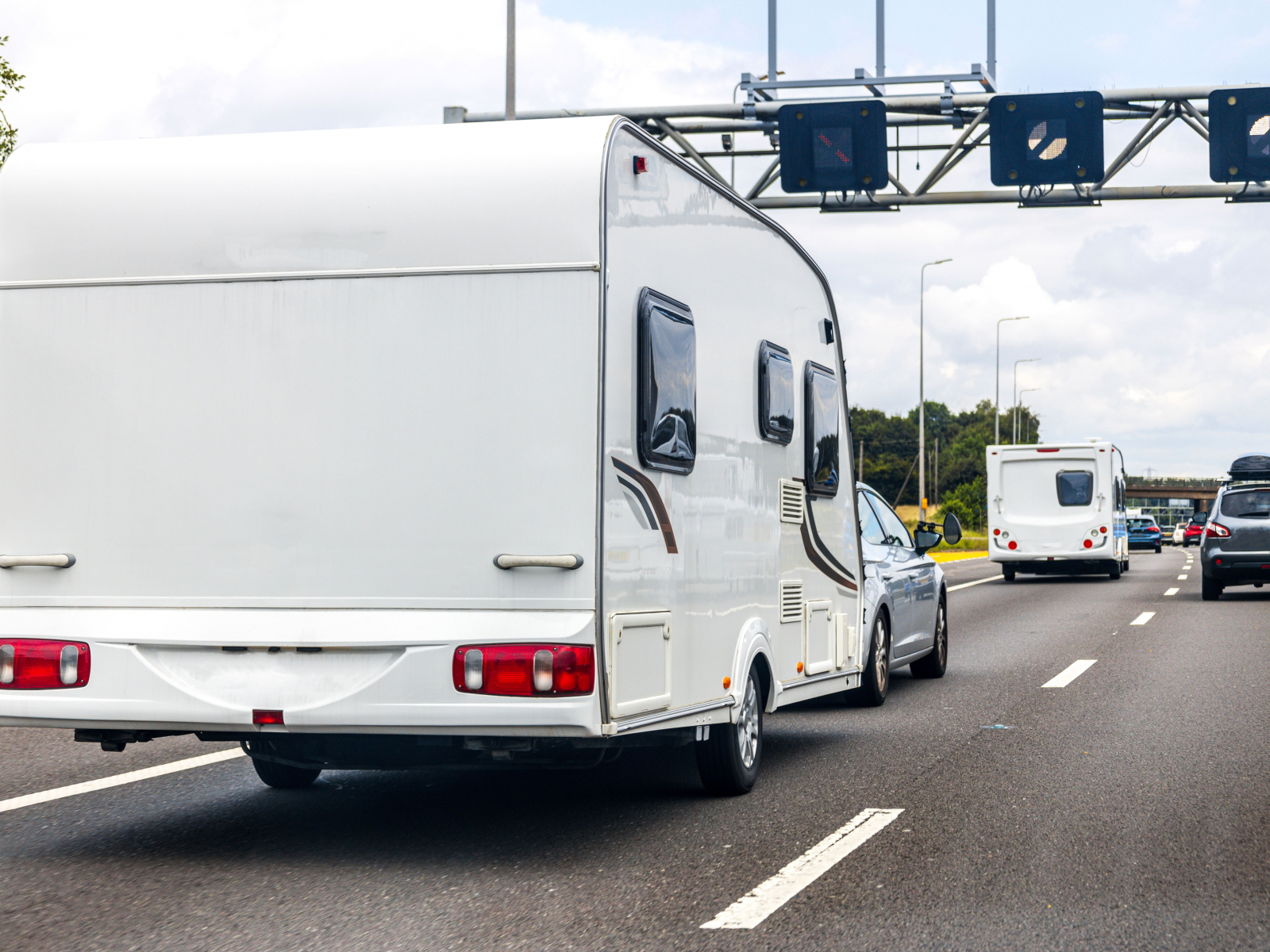248 caravans and motorhomes now in stock
All our stock is 70 point checked and prepared before sale
Explore our vehicle display in its tranquil 16 acre woodland site
A Beginners Guide to Towing a Swift Challenger Caravan
Posted 15/07/2024
Author: Hellen Dimmock
Whether you’re planning a weekend getaway or an extended road trip, towing a caravan opens up a world of adventure and freedom. However, for first-time towers, the process can seem daunting. We have put together a blog to provide you with all the essential information and practical tips to ensure a safe and enjoyable towing experience with your Swift Challenger caravan.
1. Driving licence for towing
As long as you hold a valid UK driver’s licence then you are able to tow a caravan trailer - However, the size and weight of which one, depends on when you passed your test. The rules changed in 1997, so if you passed your test before 1st January 1997, then you can tow any vehicle and trailer combination up to 8,250kg Maximum Authorised Mass.
If you passed your driving test between 1st January 1997 and 19th January 2013 and hold a category B licence then you are able to drive a vehicle up to 3,500kg and tow a trailer up to 750kg. It’s important to note, you can tow a trailer over 750kg as long as the trailer and vehicle weigh no more than 3,500kg together. The same applies if you passed your test after 19th January 2013.
If you are wanting to tow anything heavier than what your licence allows, then you must take a special ‘B+E test’ and get a special trailer licence. You can book the car and trailer test in the same way as you would with the standard practical test, but you will take it at an LGV test centre rather than a normal driving test centre. You will be told to take the test in an unladen category B vehicle towing a suitably braked unladen trailer of at least one tonne MAM.
2. Matching your outfit
If you are a beginner in towing caravans, then you might not know what matching your outfit means, but in this context, it is making sure your tow vehicle is able and legal to tow your chosen caravan. There’s quite a bit of maths involved in outfit matching, but as an overview, consider the below:
The weight of your caravan should never exceed the weight of your car (you will be able to find the maximum weight in your car handbook)
To be able to safely tow up hills and stop, it is advised that the weight of the caravan with its contents should not exceed 85% of the car’s kerb weight
We understand that outfit matching can seem a little daunting, but it is a lot simpler than it looks and there’s lots of help available.
3. Hitching your caravan
Before you think about towing a caravan you need to hitch it - Which is essentially the most important part of towing. Follow our steps below to get the perfect connection:
Before starting the hitching process, you need to make sure you turn off all gas appliances and you’ve raised the caravan’s corner steadies, removing the caravan’s chocks unless you’re on a sloped or uneven surface. Before you back up the towing vehicle, raise the hitch using the jockey wheel until it is rested just above the height of the towball.
Backing up the tow vehicle is best done with two people, one to drive and one to direct. Once the towing vehicle is lined up, back it up slowly so that the tow bar and the hitch align and are in proximity.
The next step is to connect the caravan, first you need to lower the jockey wheel so the coupling locks to the towball - If your coupling includes a visual locking indicator, then be sure to check this to ensure the coupling was successful. If however, your caravan comes with a hitch stabiliser this should be engaged at this point.
Once the weight of the trailer is supported by the tow coupling, it’s time to stow the jockey wheel. Newer caravans allow you to simply raise the jockey wheel, whereas older models require the removal of the jockey wheel for storage elsewhere.
If you have a breakaway cable, be sure to connect it as this will apply the brakes on the caravan should the coupling become disconnected, and is an essential safety feature for larger trailers. If your tow bar has a loop then you can use this to connect the cable, but if not, loop the cable around the tow bar and then clip it to itself.
The final step is to connect the car electrics to the caravan and ensure they are working, without this electrical connection you won’t have any brake lights, fog lights or indicators, which is illegal. If you have a modern caravan then it should come with a 13-pin twist socket which provides a secure connection between the car and the caravan, though some older models may still use the older 12N and 12S 7-pin double socket configuration.
With everything now connected, simply release the trailer handbrake and remove any remaining chocks and you are good to go!

4. Top tips for driving when towing a caravan
When towing a caravan you must adhere to the special speed limits which differ from those on road signs - These reduced speeds are there to protect yourself and other road users. The towing speed limits are:
- Motorway - 60 mph instead of 70 mph
- Dual carriageway - 60 mph instead of 70 mph
- Single carriageway - 50 mph instead of 60 mph
No matter what car you have, you will need to fit towing mirrors. It is a legal requirement that you can see an area four metres from the side of your caravan 20 metres behind you. There are different types of towing mirrors available, so be sure to choose the right ones to suit your car.
If you are new to towing a Swift Challenger for example, then you need to remember to take corners a little differently to how you would normally drive. Make sure you approach each corner slowly and give yourself plenty of extra space when turning. Similar to turning, always approach braking slowly and cautiously too, due to the added weight attached to your vehicle, braking will take longer so you need to give ample time when slowing down.
Another very important tip is to be aware of snaking and pitching. Snaking is where your trailer wobbles left and right which, in extreme cases can drag the towing vehicle around and cause you to lose control. Pitching is where the front of the car moves up and down, causing a seesaw effect. The best way to prevent pitching and snaking is to make sure your caravan and car are well balanced in terms of weight, if you do feel you need to regain control, take your feet off both pedals and keep steering in a straight line.
To conclude, caravan holidays offer the perfect blend of comfort and mobility; by following the guidelines and tips provided in this blog, you can tow with confidence and ease.





